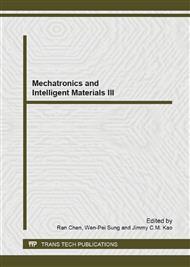p.601
p.609
p.613
p.618
p.623
p.629
p.635
p.639
p.644
An Adaptive KLT Algorithm for Hand Gesture Tracking
Abstract:
With the development of human-computer interaction technology, hand gesture is widely investigated recently for its natural and convenient properties. In view of the disadvantage of the existing tracking algorithms for the hand gesture, a novel adaptive method based on KLT is proposed in this paper, in which a kind of filtering mechanism is applied to decrease the effects of noise and illumination on tracking system. In order to eliminate the error of tracking, the strategy based on confidence is utilized properly. However, because the hand is non-rigid, its shape often changes, which easily leads to tracking failure for the reduction of features. In order to solve the problem, a method for appending the feature points is introduced. Experimental results indicate that the method presented in this paper is state of the art robustness in our comparison with related work and demonstrate improved generalization over the conventional methods.
Info:
Periodical:
Pages:
623-628
Citation:
Online since:
June 2013
Authors:
Keywords:
Price:
Сopyright:
© 2013 Trans Tech Publications Ltd. All Rights Reserved
Share:
Citation:


